Why Malaysia
Malaysia is a place where many cultures, flavours, experiences and ideas converge
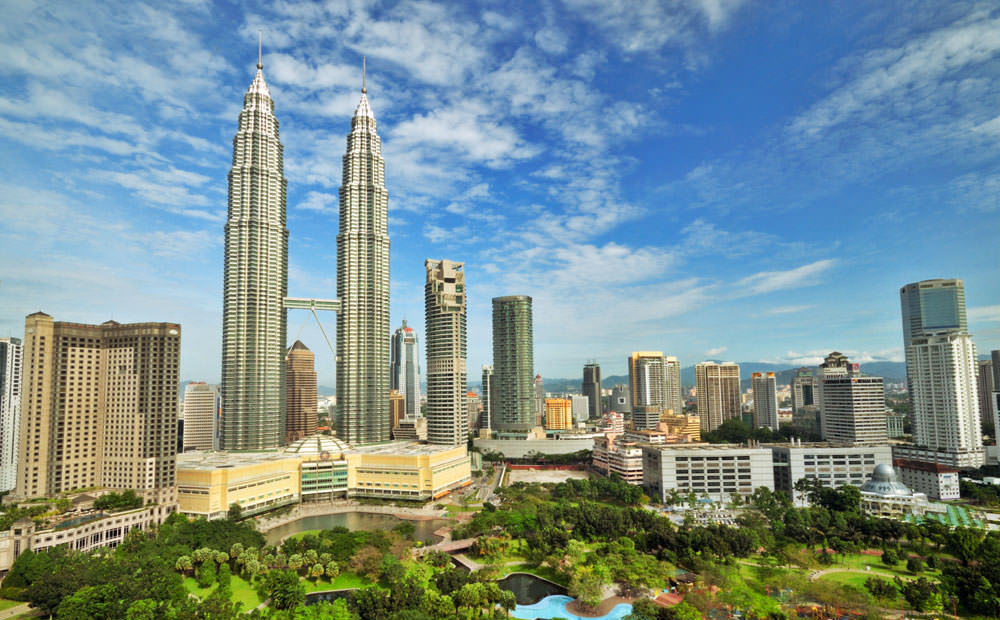
MALAYSIA
Known globally as the wild east, Malaysia is deservedly one of the most popular destinations in Southeast Asia. From picture-perfect sandy beaches, steamy jungles and the dazzling neon buzz of cityscapes, Malaysia has something for everyone. This is a land of adventure, indulgence and beauty that’s guaranteed to satisfy your wanderlust and put a smile on your face.


MALAYSIA
Known globally as the wild east, Malaysia is deservedly one of the most popular destinations in Southeast Asia. From picture-perfect sandy beaches, steamy jungles and the dazzling neon buzz of cityscapes, Malaysia has something for everyone. This is a land of adventure, indulgence and beauty that’s guaranteed to satisfy your wanderlust and put a smile on your face.

Geography
Malaysia could be seen as a central hub to many neighbouring countries in the region; the Strait of Malacca, lying between Sumatra and Peninsular Malaysia, is one of the most important thoroughfares in global commerce, carrying 40 per cent of the world's trade; Malaysia itself shares borders over land and sea with Thailand, Brunei, Singapore, the Philippines, Vietnam and Indonesia. Tanjung Piai, located in Johor, is the southernmost tip of continental Asia, whilst Malaysia’s cultural identity reaches far back into British colonial times and has evolved into a mixture of all these influences and more.
East Malaysia, located on the island of Borneo, rises slowly from coastal regions and glides upwards through hills and valleys, into a hothouse of steamy jungles that cling to its mountainous interior. One of the most impressive is the Crocker Range, which divides the state of Sabah and extends northwards from Sarawak. Sarawak is also home to Gunung Mulu National Park and the famous Mulu Caves, which form the largest cave system in the world. In Kinabalu National Park you’ll find Mount Kinabalu, which at 4,095 metres (13,435 ft), is the tallest mountain in Malaysia. The park is one of four UNESCO World Heritage Sites to be found in Malaysia.
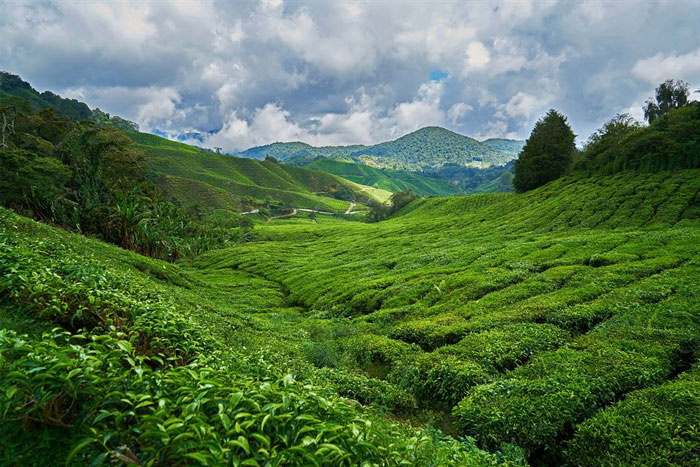
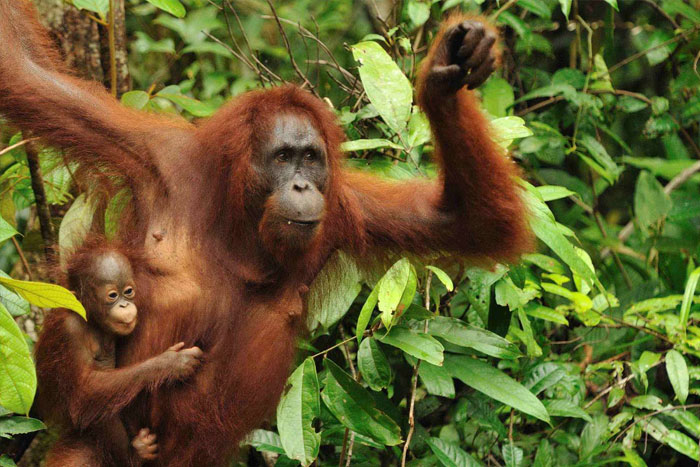
Natural Biodiversity
Malaysia is one of 17 megadiverse countries on earth, home to an unusually large number of endemic species. The many pristine landscapes of the country actually support around 20 per cent of the world's animal species; there are 210 mammals, 620 types of birds, 150 snakes, 80 lizards, 150 frogs and thousands of insects. Here you will find forests that are over 130 million years old, home to 14,500 species of flowers, including the giant Rafflesia; the world’s largest, growing up to a metre across. Green-fingered travellers will discover pitcher plants, lianas and orchids in the humid lowlands, along with the conifers and rhododendrons of high-altitude forests.
Located in the Coral Triangle, Malaysia is also a marine biodiversity hotspot, with the waters surrounding Sipadan island in particular being some of the richest in the world. The Sulu Sea is home to around 600 coral species and 1,200 fish species. The unique biodiversity of Malaysian Caves always attracts lovers of ecotourism from all over the world.
Culture
Multi-ethnic and multi-cultural, Malaysia’s population of over 30 million people is spread out across a federation of 13 states and three federal territories. Heritage and tradition are heavily influenced by India, China, Thailand and Indonesia, making visits to Malaysia an eclectic and captivating journey into the heart of Asia. Malaysia’s cultural fusion is most noticeable in Penang. Take a stroll through the streets of the capital George Town, and you will find a UNESCO World Heritage site that is packed with historical and cultural gems including beautiful colonial architecture, classic churches, Buddhist and Hindu temples and grand mosques.
Music in Malaysia is traditionally used for storytelling, celebrating life-cycle events, and occasions such as a harvest. Particularly in the east, gong-based musical ensembles such as agung and kulintang are commonly used in ceremonies such as funerals and weddings. Here you will also find exquisite carving, weaving, and silversmithing; from handwoven baskets in rural areas to the ornate silverwork of the Malay courts; from ornamental Kris daggers, to beetle nut sets and woven batik and songket fabrics; Malaysia’s arts and craftwork are as rich as they are varied.
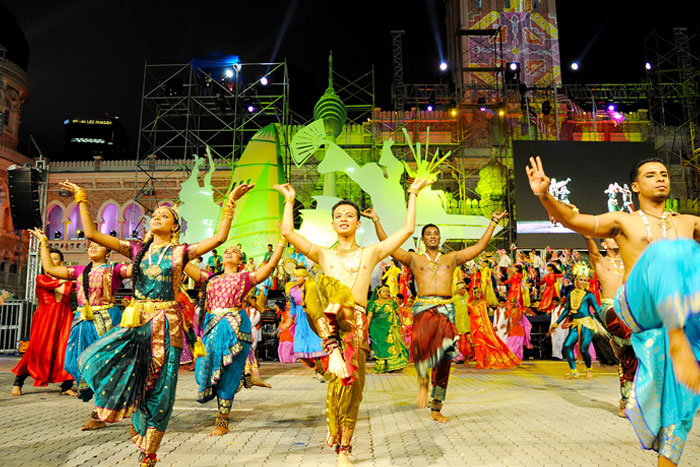
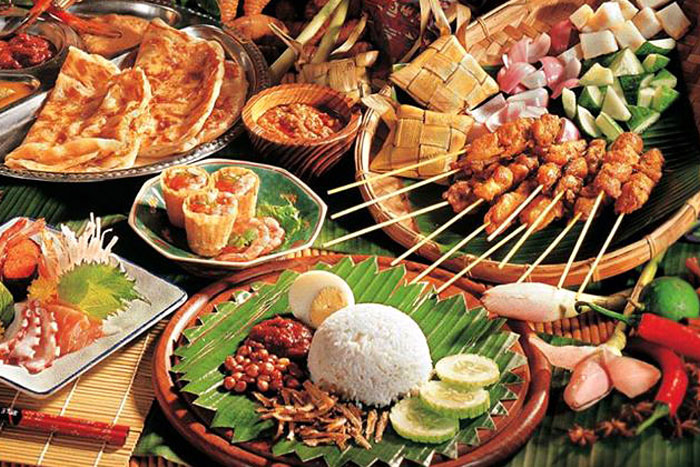
Cuisine
Nowhere is Malaysia’s melting pot of cultures more evident than in its cuisine. Combining fragrant and distinctive ingredients such as kaffir lime, turmeric, ginger, black pepper, coriander and lemongrass, Malaysia’s menu is bursting with flavours. Cooking techniques and recipes from Thailand, Brunei, Indonesia, China and India are all added to the mix, making culinary travels through Malaysia a truly international experience.
Try the tangy soy sauce of Malaysia’s noodles and you’ll be transported to China, or get a taste of Thailand in the aromatic lemongrass and ginger. Indonesia’s famous rendang is a rich and indulgent meat treat, whilst the unmistakeable smell of durian fruit can be found in many places when it’s in season; an invitation to try something a little more adventurous. Nasi lemak is rice cooked in coconut milk and pandan leaves. This delicious and ubiquitous staple is generally acknowledged as Malaysia’s national dish.
Megacities
Malaysia’s bustling capital city has it all; amazing architecture, buzzing nightlife, fantastic restaurants and great transport linking it all together. Here you will find towering monuments to the ultra-modern, standing alongside the domes and minarets of Arabic-style mosques and bazaars.
With many iconic stops scattered around, Kuala Lumpur’s city streets are a mix of modern and traditional, all framed by banyan trees and blue skies overhead. Sample some tasty street food, or lose yourself in the city’s busy shopping centres, haggle at market bazaars, climb the famous Petronas Towers for great views, and ride the KL Monorail for easy access to each part of the city. Kuala Lumpur is also a great starting point for day trips to the ancient Batu Caves and city-state of Melaka.
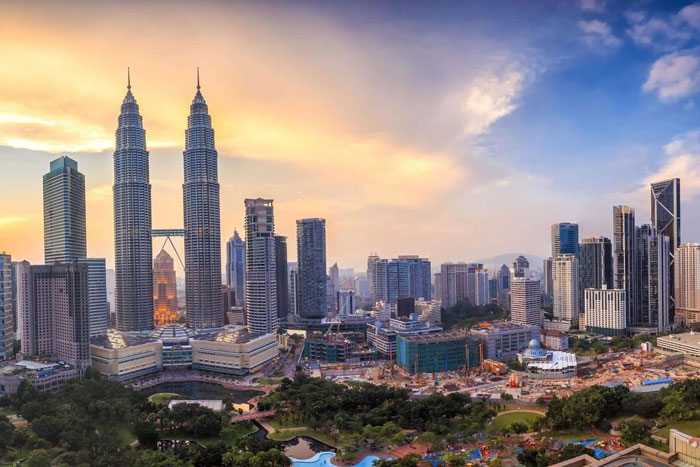
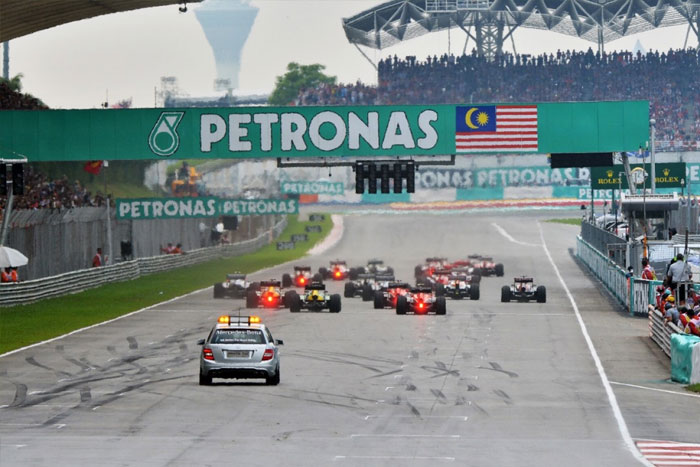
The Grand Prix
Each year, the biggest names in Formula 1 come to Sepang, along with the international jet set entourage, for the Malaysian Grand Prix. The race is always a big deal in the Malaysian calendar, and a great excuse to visit and join the party. The race is usually held in March every year and is one of the major sporting highlights in Malaysia.
Multiculturalism
From traders and missionaries to migrants, moguls and holidaymakers, Malaysia has drawn people from far and wide over many centuries, resulting in a culture of inclusion, commonality and acceptance. The country has become a home to people from all over the globe; each offering their own unique contribution to the tapestry. Whether you visit little India in Kuala Lumpur, the Chinese Jetty in Penang, or admire the street art of Lithuanian backpackers, everyone has contributed to make this country a patchwork of different cultural influences and traditions.
Malaysia is a great example of diverse communities living in harmony, full of respect and admiration for each other. Here you will find temples next to mosques and churches beside temples. You can join the wild and colourful chaos of Holi festival or serenely slip into the collective chill and contemplation of Ramadan.
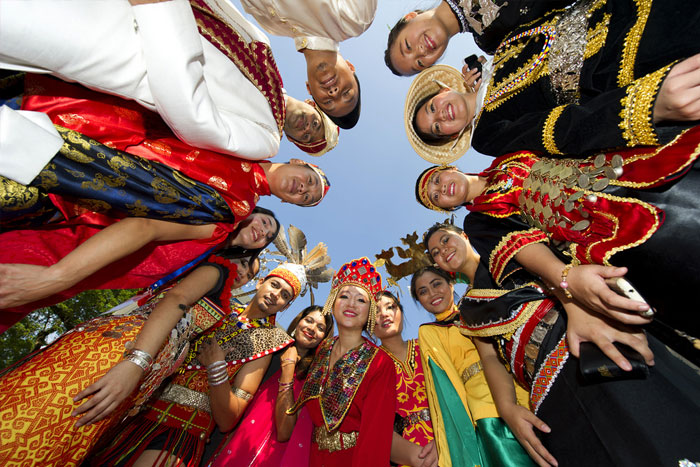
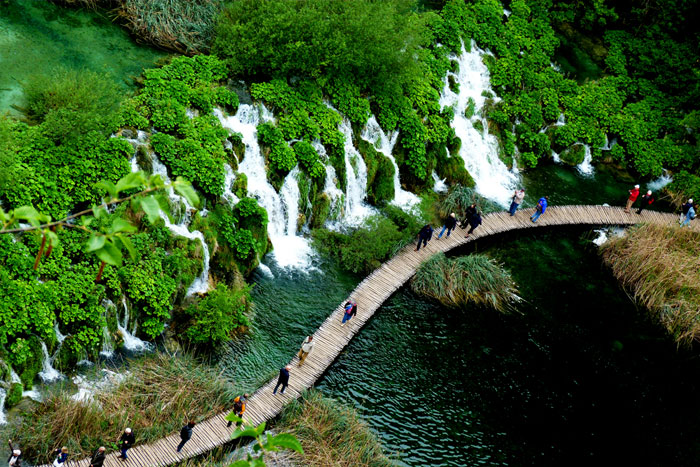
National Parks
As one of the most biodiverse and naturally beautiful places on earth, Malaysia is a treasure trove for explorers in search of wild places. The country is a modern success story, with many national parks and conservation areas ensuring the preservation and celebration of Malaysia’s natural wonders. Gunung Mulu National Park is located in Sarawak, Malaysian Borneo and is a UNESCO World Heritage site. At 700 metres long, 400 metres wide and at least 70 metres high, The Sarawak Chamber is the largest cave of its kind in the world.
Other notable caves in this area are the Benarat Cavern, the Wind Cave, and the Clearwater Cave, which contains parts of one of the world's largest underground river systems and is also believed to be one of the largest caves in the world. It is truly a place unlike any other in the world. Gunung Gading National Park is where the world’s largest flower grows. Rafflesia bloom throughout the year, though the best time is November through January. The Sarawak park also has some excellent beaches, rugged mountains and jungles that are perfect for hiking.
Cameron Highlands
Located right in the heart of the Malaysian peninsula, The Cameron Highlands are a hill station that was first developed by the British in the 1920s. Named after Sir William Cameron, these remote and refreshing highlands are criss-crossed by hiking trails that weave a pathway through verdant tea plantations and shady forests into tranquil clearings, where waterfalls and rivers frame some picture-perfect locations.
Up here in the clouds, you can enjoy a cup of tea in an authentic British colonial house overlooking the biggest tea plantations in Malaysia. The area is also known for its diverse wildlife, supported by a pristine habitat. If you are lucky during one of your treks, you may come across the very rare mountain Peacock-Pheasant. If you love nature and are looking for a refreshing change in climate, the Cameron Highlands will surely be just your cup of tea.
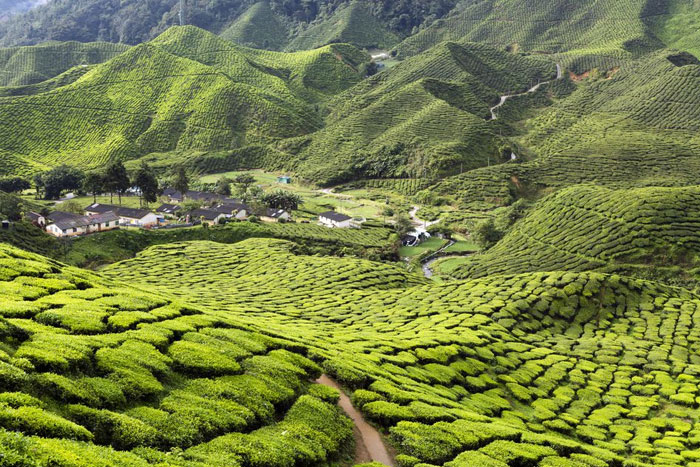
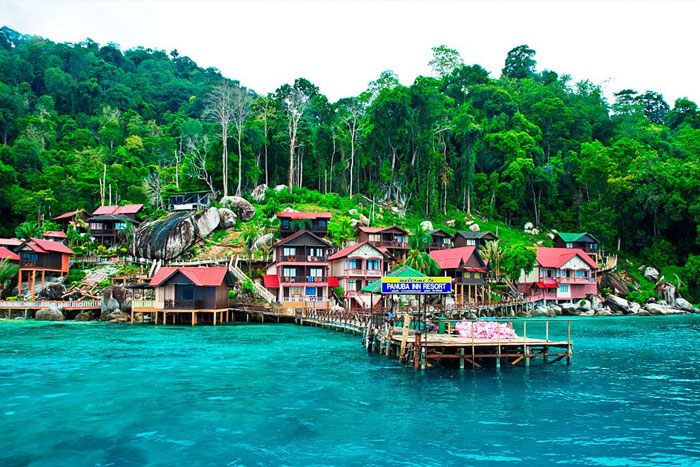
Adventure
Malaysia is an exotic and exhilarating location, where there’s as much action as there is beauty. If you’re into extreme sports, nature or exploration, Malaysia is guaranteed to deliver. Head to the Perhenthian and Tioman Islands for some excellent scuba and snorkelling spots, venture into the depths of Turtle Cave in Gunung Mulu National Park, trek through the tea plantations of the Cameron Highlands, bungee jump at Sunway Extreme Park or go rafting at Kuala Kubu Bharu; Malaysia is a thrill seeker’s playground, set against the backdrop of tropical paradise.
Geography
Malaysia could be seen as a central hub to many neighbouring countries in the region; the Strait of Malacca, lying between Sumatra and Peninsular Malaysia, is one of the most important thoroughfares in global commerce, carrying 40 per cent of the world's trade; Malaysia itself shares borders over land and sea with Thailand, Brunei, Singapore, the Philippines, Vietnam and Indonesia. Tanjung Piai, located in Johor, is the southernmost tip of continental Asia, whilst Malaysia’s cultural identity reaches far back into British colonial times and has evolved into a mixture of all these influences and more.
East Malaysia, located on the island of Borneo, rises slowly from coastal regions and glides upwards through hills and valleys, into a hothouse of steamy jungles that cling to its mountainous interior. One of the most impressive is the Crocker Range, which divides the state of Sabah and extends northwards from Sarawak. Sarawak is also home to Gunung Mulu National Park and the famous Mulu Caves, which form the largest cave system in the world. In Kinabalu National Park you’ll find Mount Kinabalu, which at 4,095 metres (13,435 ft), is the tallest mountain in Malaysia. The park is one of four UNESCO World Heritage Sites to be found in Malaysia.

Natural Biodiversity
Malaysia is one of 17 megadiverse countries on earth, home to an unusually large number of endemic species. The many pristine landscapes of the country actually support around 20 per cent of the world's animal species; there are 210 mammals, 620 types of birds, 150 snakes, 80 lizards, 150 frogs and thousands of insects. Here you will find forests that are over 130 million years old, home to 14,500 species of flowers, including the giant Rafflesia; the world’s largest, growing up to a metre across. Green-fingered travellers will discover pitcher plants, lianas and orchids in the humid lowlands, along with the conifers and rhododendrons of high-altitude forests.
Located in the Coral Triangle, Malaysia is also a marine biodiversity hotspot, with the waters surrounding Sipadan island in particular being some of the richest in the world. The Sulu Sea is home to around 600 coral species and 1,200 fish species. The unique biodiversity of Malaysian Caves always attracts lovers of ecotourism from all over the world.

Culture
Multi-ethnic and multi-cultural, Malaysia’s population of over 30 million people is spread out across a federation of 13 states and three federal territories. Heritage and tradition are heavily influenced by India, China, Thailand and Indonesia, making visits to Malaysia an eclectic and captivating journey into the heart of Asia. Malaysia’s cultural fusion is most noticeable in Penang. Take a stroll through the streets of the capital George Town, and you will find a UNESCO World Heritage site that is packed with historical and cultural gems including beautiful colonial architecture, classic churches, Buddhist and Hindu temples and grand mosques.
Music in Malaysia is traditionally used for storytelling, celebrating life-cycle events, and occasions such as a harvest. Particularly in the east, gong-based musical ensembles such as agung and kulintang are commonly used in ceremonies such as funerals and weddings. Here you will also find exquisite carving, weaving, and silversmithing; from handwoven baskets in rural areas to the ornate silverwork of the Malay courts; from ornamental Kris daggers, to beetle nut sets and woven batik and songket fabrics; Malaysia’s arts and craftwork are as rich as they are varied.

Cuisine
Nowhere is Malaysia’s melting pot of cultures more evident than in its cuisine. Combining fragrant and distinctive ingredients such as kaffir lime, turmeric, ginger, black pepper, coriander and lemongrass, Malaysia’s menu is bursting with flavours. Cooking techniques and recipes from Thailand, Brunei, Indonesia, China and India are all added to the mix, making culinary travels through Malaysia a truly international experience.
Try the tangy soy sauce of Malaysia’s noodles and you’ll be transported to China, or get a taste of Thailand in the aromatic lemongrass and ginger. Indonesia’s famous rendang is a rich and indulgent meat treat, whilst the unmistakeable smell of durian fruit can be found in many places when it’s in season; an invitation to try something a little more adventurous. Nasi lemak is rice cooked in coconut milk and pandan leaves. This delicious and ubiquitous staple is generally acknowledged as Malaysia’s national dish.

Megacities
Malaysia’s bustling capital city has it all; amazing architecture, buzzing nightlife, fantastic restaurants and great transport linking it all together. Here you will find towering monuments to the ultra-modern, standing alongside the domes and minarets of Arabic-style mosques and bazaars.
With many iconic stops scattered around, Kuala Lumpur’s city streets are a mix of modern and traditional, all framed by banyan trees and blue skies overhead. Sample some tasty street food, or lose yourself in the city’s busy shopping centres, haggle at market bazaars, climb the famous Petronas Towers for great views, and ride the KL Monorail for easy access to each part of the city. Kuala Lumpur is also a great starting point for day trips to the ancient Batu Caves and city-state of Melaka.

The Grand Prix
Each year, the biggest names in Formula 1 come to Sepang, along with the international jet set entourage, for the Malaysian Grand Prix. The race is always a big deal in the Malaysian calendar, and a great excuse to visit and join the party. The race is usually held in March every year and is one of the major sporting highlights in Malaysia.

Multiculturalism
From traders and missionaries to migrants, moguls and holidaymakers, Malaysia has drawn people from far and wide over many centuries, resulting in a culture of inclusion, commonality and acceptance. The country has become a home to people from all over the globe; each offering their own unique contribution to the tapestry. Whether you visit little India in Kuala Lumpur, the Chinese Jetty in Penang, or admire the street art of Lithuanian backpackers, everyone has contributed to make this country a patchwork of different cultural influences and traditions.
Malaysia is a great example of diverse communities living in harmony, full of respect and admiration for each other. Here you will find temples next to mosques and churches beside temples. You can join the wild and colourful chaos of Holi festival or serenely slip into the collective chill and contemplation of Ramadan.

National Parks
As one of the most biodiverse and naturally beautiful places on earth, Malaysia is a treasure trove for explorers in search of wild places. The country is a modern success story, with many national parks and conservation areas ensuring the preservation and celebration of Malaysia’s natural wonders. Gunung Mulu National Park is located in Sarawak, Malaysian Borneo and is a UNESCO World Heritage site. At 700 metres long, 400 metres wide and at least 70 metres high, The Sarawak Chamber is the largest cave of its kind in the world.
Other notable caves in this area are the Benarat Cavern, the Wind Cave, and the Clearwater Cave, which contains parts of one of the world's largest underground river systems and is also believed to be one of the largest caves in the world. It is truly a place unlike any other in the world. Gunung Gading National Park is where the world’s largest flower grows. Rafflesia bloom throughout the year, though the best time is November through January. The Sarawak park also has some excellent beaches, rugged mountains and jungles that are perfect for hiking.

Cameron Highlands
Located right in the heart of the Malaysian peninsula, The Cameron Highlands are a hill station that was first developed by the British in the 1920s. Named after Sir William Cameron, these remote and refreshing highlands are criss-crossed by hiking trails that weave a pathway through verdant tea plantations and shady forests into tranquil clearings, where waterfalls and rivers frame some picture-perfect locations.
Up here in the clouds, you can enjoy a cup of tea in an authentic British colonial house overlooking the biggest tea plantations in Malaysia. The area is also known for its diverse wildlife, supported by a pristine habitat. If you are lucky during one of your treks, you may come across the very rare mountain Peacock-Pheasant. If you love nature and are looking for a refreshing change in climate, the Cameron Highlands will surely be just your cup of tea.

Adventure
Malaysia is an exotic and exhilarating location, where there’s as much action as there is beauty. If you’re into extreme sports, nature or exploration, Malaysia is guaranteed to deliver. Head to the Perhenthian and Tioman Islands for some excellent scuba and snorkelling spots, venture into the depths of Turtle Cave in Gunung Mulu National Park, trek through the tea plantations of the Cameron Highlands, bungee jump at Sunway Extreme Park or go rafting at Kuala Kubu Bharu; Malaysia is a thrill seeker’s playground, set against the backdrop of tropical paradise.


